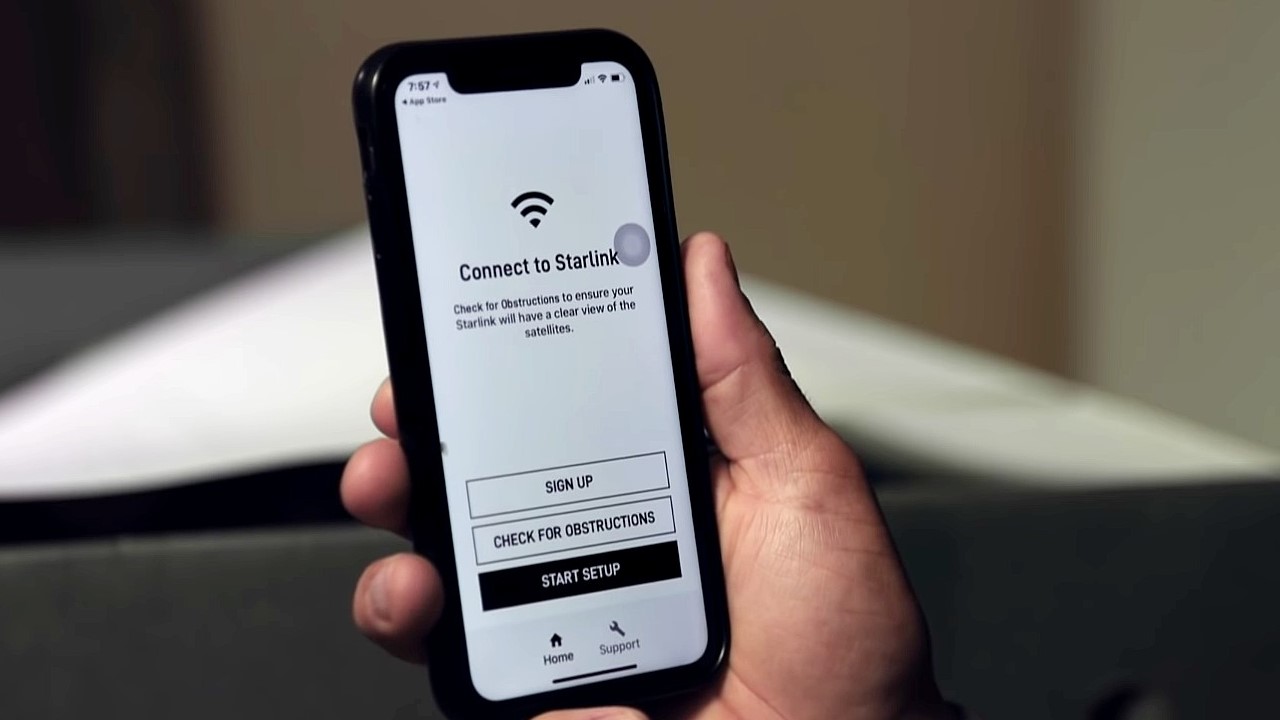Elon Musk Satellite Cell Phone Starlink: Plans, Prices & Top Speed and T-Mobile CEO Mike Sievert were on stage together on Thursday to make the announcement that SpaceX is collaborating with the company to entirely remove cellular dead zones. According to the firms, the next-generation Starlink satellites, which are scheduled to debut the following year, will be able to interact directly with phones, enabling you to text, make calls, and maybe stream video even if there are no cell towers in the area. Musk also asserted that all of this could be accomplished using current-generation smartphones, negating the need for users to purchase any more hardware.
The company is making a big claim because Verizon and AT&T don’t have anything similar. However, firms other than SpaceX and T-Mobile are also interested in using satellites to directly connect with mobile phones using the available wireless spectrum. A firm named Lynk Global has previously proven that its satellite “cell towers” can be used to relay text messages from conventional phones, while AST SpaceMobile has long claimed to beam internet to phones from space. It’s simple to think that these businesses would be concerned that two industry titans would suddenly want to join a comparable game, but it turns out that’s not the case at all. They appear to be really happy.

What time is the Elon Musk Satellite Cell Phone Launch?
According to Elon Musk, Starlink V2 will launch the following year and, by sending straight to mobile devices, would eradicate dead zones everywhere. For one zone, the connection will be 2-4 megabits. It would be excellent for phone conversations and text messages, but not for huge bandwidth, he tweeted.
Elon Musk also declared that he will include the newest technology in the premium connectivity of his electric car, Tesla. The majority of handsets on T-network Mobile will be old-radio compatible with new services. With this revolutionary technology, according to Musk, dead zones will no longer exist anyplace on Earth. It appears that this would be ground-breaking.
Read: Sorry, Elon Says Tesla Pi Phone Not Come Out
Who are the rivals of T-Mobile and SpaceX in satellite-to-phone technology?
Charles Miller, CEO of Lynk, told The Verge that his company “loves the validation and attention that this is bringing to our technology.” “We’ve been receiving several calls today from carriers asking for assistance.”
Lynk’s original objective is comparable to SpaceX’s. it is collaborating with a number of carriers globally to enable its customers to send messages via a satellite network it is currently constructing. Miller emphasized the technology’s significance during crises and natural disasters, where events like hurricanes, wildfires, flooding, or earthquakes may disrupt conventional cell networks, just like T-demonstration Mobile’s did. It is fortitude. It provides immediate backup for everyone on Earth. Your phones can still communicate even when the towers are down,” he added. This is going to save lives.
Why join satellite networks with mobile devices?
distant locations are covered. High-quality connection has become commonplace thanks to mobile phone towers in areas with large populations. But if you get over them, satellites may make sense. The majority of specialized satellite phones are fairly large, pricey, and only used in severe circumstances, such as by aid workers in isolated areas of developing nations, Antarctic scientists, or oil rig personnel. Last night’s lecture talked extensively about folks who live on rural farms or have pastimes that require them to venture into the woods. You’ll never have to worry about losing service, according to the sales pitch.

Why is it difficult to link phones to satellites?
Powerful and far-off. Your smartphone is made to communicate with cell towers within a 10-kilometer range (6 mi). Satellites will be 500 km from you and traveling at a speed of more than 17,000 mph. Customers connect using a ground station that is 20 inches by 12 inches for Starlink, SpaceX’s internet satellite network. The satellites in issue must be equipped with antennae that can pick up a very low signal in order for the connection to function without expanding the phone in your pocket. Technically speaking, they can achieve this in the lab, according to Musk, but it takes a huge antenna. NASA was concerned that the original size of AST SpaceMobile’s satellites may increase the likelihood of orbital collisions.
Finding a portion of the electromagnetic spectrum, or a radio wave frequency, that you can use to send back and forth, is another difficult task. The big news from last night is that T-Mobile will allow connections between its phones and the spaceship by sharing some of the frequencies it is authorized to use with SpaceX.
Will this truly occur by next year?
The T-Mobile/SpaceX initiative has several challenges that must be overcome. The second generation Starlink satellites, which will be deployed, will be reconfigured with new antennas that utilize T-bandwidth Mobile according to Musk.
Furthermore, SpaceX will have to use Starship, a rocket that hasn’t actually entered orbit yet, to launch these second-generation Starlink satellites into space because they are already fairly large. Even if everything goes according to plan, which is unusual in the rocket development industry, it will take a while for Starship to fly repeatedly enough to launch enough new satellites into orbit to connect with T-Mobile.





